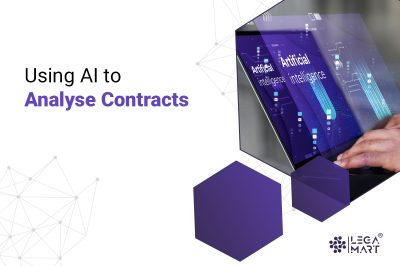With the rise of Blockchain technology, legal issues will arise too, and here, we will explain a bit about blockchain legal issues.
Blockchain’s Definition
Defining blockchain is not an easy task. Some people trying to define it will say that the process is entirely new. It does not store any of the information in a central location but in a chain of computers (blocks), but some of them will say that it is based on an old way of communication and storage adapted for today’s digital era.
However, according to this library, the major elements of blockchain nowadays are commonly identified:
- It cannot be corrupted and altered – every node on the network has a copy of the digital ledger, and to add a transaction, the other nodes need to validate it, according to the so-called consensus mechanism. If there is no validation by most nodes, the transaction is not added to the ledger.
- It is decentralized – no central authority has control of it, but – as outlined below, there are different types of blockchains with various features.
- It is secure – since it is not under the control of any authority/body and because all the information on the chain is encrypted and linked to the previous ones, to hack the blockchain, an attacker should decrypt the majority of the nodes on the blockchain, which ensures an extremely high level of security.
- It relies on distributed ledgers – all users maintain the ledger. Therefore the computational power is distributed across them and is exceptionally transparent since the information is visible to any third party and participant.
- It ensures a faster settlement – since there is no intermediary in transactions, settlements are more rapid than traditional transactions operated by banks – but they cannot be instantaneous, given the complicated procedure outlined above.
- It is fully decentralized, and no one authority has control.
According to Hossein Nabilou, a postdoctoral researcher at the University of Luxembourg, in Bitcoin governance, users may employ a variety of mechanisms to participate in the governance of the network.
Blockchain Legal Issues
The arrival of blockchain technology brings the ambiguity of how the American legal system will treat such technology; before the rise of mentioned technology, businesses were uncertain about how courts would treat electronic records and signatures until the federal legislature enacted the E-Sign Act on June 30, 2000.
To provide even more clarity to businesses, the National Conference of Commissioners on Uniform State Laws drafted the Uniform Electronic Transactions Act (the “UETA”) to provide states with a framework to enact laws governing the enforceability of electronic records and signatures.
Almost every state in the U.S. has adopted some form of the UETA, and the industry heavily relies on electronic contracting.
The legislative process has already begun for blockchain technology. Arizona and Tennessee enacted laws stating that this technology signature is considered an electronic signature, and the Technology record is regarded as an electronic one.
Further, these laws say that courts may not deny a contract legal validity because the contract contains “smart contract” terms. Other states also attempt blockchain in their current commercial laws to blockchain technologies. Wyoming, for example, is breaking ground by addressing blockchain’s impact on the attachment, perfection, and priority rules of Art. 9 of the Uniform Commercial Code. Similarly, Delaware and Maryland have amended their general corporation and limited liability company laws to permit this technology to create and maintain company records concerning equity interests.
Beyond when and how legislatures and courts will solidify blockchain Blockchain as a valid platform or contracting, there are other possible legal questions and ramifications for using this technology in the supply chain. Some possible areas of legal considerations follow below.
Due Diligence on Blockchain
The term due diligence is the work of investigating, auditing or reviewing performed to confirm facts or details of a matter under consideration, and when it comes to investing, this process is done to see whether the assumptions under which a decision is being considered are true;
Hence one of the main goals of blockchain is to ease transactions, and the main advantage of this technology is being decentralized. As a result, the process of due diligence is WAY easier than other legal acts!
Getting lost in the excitement of cryptocurrencies’ high gains and extremely emotional rides is easy. However, investing in a project turning out to be a scam (or rug pull, as crypto-ers call them) can result in catastrophic loss, which can only amplify if you add institutional reputation to the mix.
To illustrate what to look for, it’s helpful to see what well-known scams have in common. For instance, in 2014, One Coin famously raised millions with almost no information concerning its technology but by making big claims and flaunting buzzwords. Soon after, its investors found themselves in a four-billion-dollar Ponzi scheme, and the now super-rich founder, known as doctor Asia disappeared, never to be seen again.
The other point to be noted is blockchain and cryptocurrency compliance is a beast of its own; The most common blockchain legal issue is projects range from being classified as securities in certain jurisdictions to being completely outlawed in their jurisdiction of choice.
In any case, a good combination to shoot for is a project with enough runway and experience to protect itself (should trouble arise), set in a jurisdiction that’s flexible but friendly towards blockchain initiatives.
And last but not least, you should know what makes a project valuable, which is declared in the project’s written statement called a white paper.
Jurisdiction Issues in Blockchain
The ability of blockchain to possess a cross-jurisdictional boundary because its nodes can be located in multiple locations worldwide may make it difficult to establish which jurisdictions’ laws and regulations apply to a given blockchain application. Therefore, this poses several complex jurisdictional issues requiring careful consideration, particularly concerning relevant contractual relationships.
The most significant risk can be formed where the transactions performed by an organization may fall under every jurisdiction in which a node in the blockchain network is situated. As a consequence, massive laws and regulations might be applied to the said transactions. However, it is easier to create some form of legal framework and internal governance structure where the system is private, which will dictate the governing law applicable to the transactions.
On the contrary, a public blockchain system might be difficult to create a legal framework. Therefore, it will be crucial to consider the applicable laws to the transactions and observe appropriate risk management.
Privacy and data protection issues in the blockchain
Privacy issues and blockchain technology has been a problem that has raised intense debate over time. Initially, blockchain was intended to facilitate peer-to-peer transactions in the absence of a central party. However, when permission is not required, such as on a public blockchain system, none of the subject parties takes responsibility for a particular blockchain network’s availability and/or security. Thus, all users of the system may access the data on the network.
This is one of the characteristics that conflict with the thrust of most privacy laws as most privacy laws provide that a party who controls another person’s personal data should safeguard the security and privacy of the said data on behalf of such person.
Another privacy and security issue is the 51% attack, considered the most dreaded threat in the blockchain business entirely. These attacks occur mostly during the early stages, where a single individual or malicious hacker collects more than half of the hash rate and seizes control of the entire system. Thereafter the hackers may modify the order of transactions and hinder their confirmation. Consequently, a compromised blockchain can cause the reversal of previously completed transactions leading to double spending.
Routing attacks. Blockchain networks and applications rely on the real-time movement of massive amounts of data, thus making it easier for hackers to intercept data when it is being transmitted to internet service providers. Since data transmission and operation proceed uninterrupted in this instance, parties to the blockchain are normally unaware of the threat. This attack is usually applied to expose confidential data or extract monetary benefits as parties are unaware or not signalled.
Phishing attack. It refers to a scamming attempt in order to obtain the credentials of a user and targets mostly Individuals or company employees. Such credentials can be stolen by sending legitimate-looking emails to wallet key owners. Such emails may then request information about the user credentials via an attached fake hyperlink. Consequently, the user’s credentials, sensitive information, and the blockchain network will be open and subject to subsequent attacks.
Governance of the Bitcoin
Firstly, to resolve disputes in the Bitcoin network, unlike other political decision-making processes, in addition to open and free entry and exit, every participant can fork the codebase or the blockchain and create her version of Bitcoin and try to persuade other users to follow her version of the chain or a code.
By providing for the technical possibility that the new chain maintains the history of the blockchain going back to the genesis block, as well as the fact that the holders of the legacy coins receive the new coins proportionate to their holdings in the legacy chain, Bitcoin is most open to the competition provided by forks.
Within such an idiosyncratic network, the ultimate decision is principally made by those who can successfully fork Bitcoin and convince most users to shift to the new chain. In this regard, the Bitcoin network users seem to possess the ultimate authority that decides which software to install and run or which implementation to follow.
By refusing to run the software proposed or implemented by developers, users can exert considerable influence on Bitcoin governance. Meanwhile, the possibility of forking and the prominent role of users in the process means that, unlike many other modes of resolving the societal collective action problems, which ultimately rely on coercion, Bitcoin governance is based on deliberation, persuasion, volition, and choice.
This way of storing information is highly secure, and nothing can be altered without a trace. Blockchain technology is often referred to as “tamper-proof.” This is generally because each new digital ‘block’ containing a record of transactions is connected to all preceding blocks. To tamper with any of the records contained in a block, a dishonest participant would need to change all subsequent blocks in the chain to avoid detection.
Given that blockchain is a decentralized ledger, there is no single point of failure that dishonest participants can override. Instead, they would require huge power to override and alter every node simultaneously.
This is especially prominent in public blockchains, where any number of nodes exist anywhere in the world. Blockchain, therefore, presents a lower risk of attack than centralized systems, in which key servers can be targeted and altered without a trace. Blockchain also uses advanced public-key cryptography to secure its data, which relies on users having two cryptographically matched keys.
When someone wants to send a user a file, they send it to a user’s public key. The file can only be opened by the user’s correlating private key. Together these features make blockchain a very secure method of recording data, according to this research paper. There is a relatively low risk of data tampering or being intercepted compared to traditional transfer and storage methods, making blockchain a risk management system.
As “Business insider” published, Bitcoin tends to get the most hype, blockchain, the underlying DLT powering the virtual currency, has a much broader range of use cases. Blockchain has found a home in nearly every industry, from financial services and payments to healthcare, energy, and property (even intellectual property) management. Many legacy institutions are now challenged by tech-savvy upstarts proposing blockchain-based solutions.
But despite its increasingly prevalent use among businesses and consumers, blockchain is still a nascent technology when it comes to regulation. Around the globe, as within the U.S., no consistent policy has yet evolved. Rather, countries have been left to their discretion — some, like those in Europe, transposing regulation into their national laws and others shunning the technology altogether.
The grey area is vast, as many countries are trying to balance building a society that fosters innovation and entrepreneurship with one that protects citizens from crime, fraud, and other harm.
Jurisdictional boundaries are not a barrier to this technology, but some issues should be considered. Blockchain can cross jurisdictional boundaries as the nodes on a blockchain can be located anywhere in the world.
This can pose several complex issues that require careful consideration concerning the relevant contractual relationships, as stated in this publication. In addition, the principles of contract and title differ across jurisdictions; therefore, identifying the appropriate governing law is essential.
In a conventional banking transaction, for example, if the bank is at fault, then irrespective of the transacting mechanism or location, the bank can be sued, and the applicable jurisdiction will most likely be contractually governed.
However, in a decentralized environment, it may be difficult to identify the appropriate set of rules to apply. At its simplest level, every transaction could potentially fall under the jurisdiction(s) of the location of every node in the network. This could result in the blockchain needing to comply with an unwieldy number of legal and regulatory regimes. Furthermore, in the event a fraudulent or erroneous transaction is made, pinpointing its location within the blockchain could be challenging.
The inclusion of an exclusive governing law and jurisdiction clause is therefore essential and should ensure that a customer has legal certainty as to the law to be applied to determine the rights and obligations of the parties to the agreement and which courts will handle any disputes.
Decentralised Autonomous Organisations(DAO)
A decentralized autonomous organization (DAO), sometimes called a decentralized autonomous corporation (DAC), is an organization represented by rules encoded as a computer program that is transparent, controlled by the organization members and not influenced by a central government, in other words, they are member-owned communities without centralized leadership. A DAO’s financial transaction record and program rules are maintained on a blockchain. The precise legal status of this type of business organization is unclear.
A well-known example intended for venture capital funding was the DAO, which amassed $150 million in crowdfunding in May 2016, and was hacked and drained of US$50 million in cryptocurrency weeks later. The hack was reversed in the following weeks, and the money was restored via a hard fork of the Ethereum blockchain. Most Ethereum miners and clients switched to the new fork while the original chain became Ethereum Classic.
To Conclude
A big change, such as blockchain technology, is difficult to make. It will take additional challenges for different law practice areas and their applicability. Therefore, it is likely that at some point, it may change the way legal services are performed in total. Most lawyers will be put in a new position in the process, which will revolutionize legal practice in the future, making countries and their legal systems cooperate more closely.
But, on the one hand, having this kind of interaction as everyday practice makes it easier to prove facts that cannot be changed without a trace. On the other hand, to see all the changes made chronologically in a more transparent, accessible, and uncomplicated way. All this makes the process of determining responsibility simpler and easily accessible.
This legal field further opens new opportunities for lawyers to develop their expertise. Without a legal framework, this technology is expected to create many disputes, and hence, the need for blockchain lawyers will arise. If you are working in this field or want to switch to this field as a lawyer, you should know what blockchain lawyers can offer.




